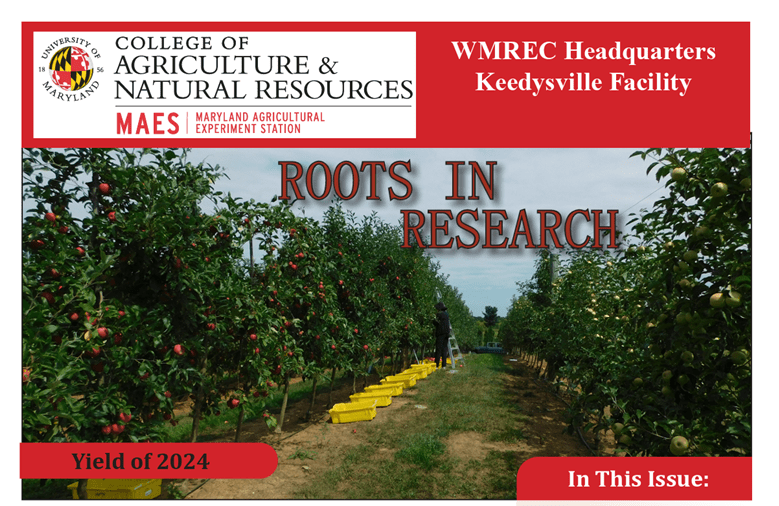Updated: May 20, 2025
Anaerobic Digestion: Basic Processes for Biogas (FS-994)
Anaerobic digestion is a process where anaerobic bacteria break down organic material to produce biogas. This process occurs naturally in various environments and can be used in anaerobic digesters to treat and dispose of waste, generate biogas, and destroy pathogens. The biogas produced consists mainly of methane and carbon dioxide, with trace levels of other gases. Authors: Gary Felton, Stephanie Lansing, Andrew Moss, and Katherine Klavon; Title: Anaerobic Digestion: Basic Processes for Biogas (FS-994).
Updated: June 24, 2024
Working on Solar Design and System Sizing (FS-2023-0655)
Authors:
Drew Schiavone
This factsheet will help you estimate the size and number of solar panels needed to meet your electrical demand. Review this factsheet to learn how to assess your electrical loads, identify solar energy levels, and correlate your electrical demand to solar production. Author: Drew Schiavone, Ph.D.; Title: Working on Solar Design and System Sizing (FS-2023-0655)
Updated: January 31, 2024
Working on Solar Wiring and Fusing (EB-2023-0676)
Authors:
Drew Schiavone
This publication explores some of the essential considerations for wiring a solar PV system, including important requirements for voltage, ampacity, voltage drop, and circuit length. Safely size wires and overcurrent protection devices for proper system design. Author: Drew Schiavone, Ph.D., Title: "Working on Solar Wiring and Fusing" (EB-2023-0676)
Updated: June 28, 2023
Working on Solar Panels and Power Output (FS-2022-0646)
Authors:
Drew Schiavone
This fact sheet demonstrates how the average consumer, with a simple set of tools, can calculate the real-world capabilities of a solar panel. These skills are particularly important when identifying a defective solar panel and/or confirming the output of a solar panel when its output parameters are unknown. Author: Drew Schiavone, Ph.D.; Title: Working on Solar Panels and Power Output (FS-2022-0646)
Updated: January 20, 2023
Solar Panels are an Increasingly Common Sight on Urban and Rural Properties Across Maryland (EB-455)
Authors:
Drew Schiavone
In this report, we explore the historical trends, current status, and potential growth of Maryland’s solar photovoltaic (PV) market in terms of market share, use sectors, and current investments. Author, Drew Schiavone. Title: Solar Panels are an Increasingly Common Sight on Urban and Rural Properties Across Maryland (EB-455)
Updated: July 19, 2022
State Review of Environmental Impacts Could Result in Mineral Leasing Opportunities in Maryland (EB-418)
Starting in 2007, many western Maryland landowners saw increased oil and gas leasing as gas companies further developed the Marcellus Shale which contains one of the largest known natural gas reserves in the world. The Marcellus Shale is adjacent to a large energy market on the East Coast. The formation is located primarily in eight states, including Pennsylvania, New York, West Virginia, and western Maryland. Many landowners may think that the period for understanding how to negotiate an oil and gas lease has passed, but Maryland’s oil and natural gas resources have not been fully developed. This Bulletin will explore some of the legal obligations that mineral owners should consider. Authors: Lori Lynch and Paul Goeringer; Title: State Review of Environmental Impacts Could Result in Mineral Leasing Opportunities in Maryland (EB-418)
Updated: March 24, 2022
Maryland’s Energy Market: The State Consumes More Energy than it Produces (FS-1188)
Authors:
Drew Schiavone
This report explores the historical trends, current status, and potential growth of Maryland’s solar photovoltaic (PV) market in terms of market share, use sectors, and current investments. The report also addresses the deployment capacity and market potential for residential, commercial, and utility-scale sectors within Maryland. Various solar initiatives, legislation, and other enabling policies currently impacting the solar market are also discussed. Author: Drew Schiavone; Title: Maryland’s Energy Market: The State Consumes More Energy than it Produces (FS-1188)
